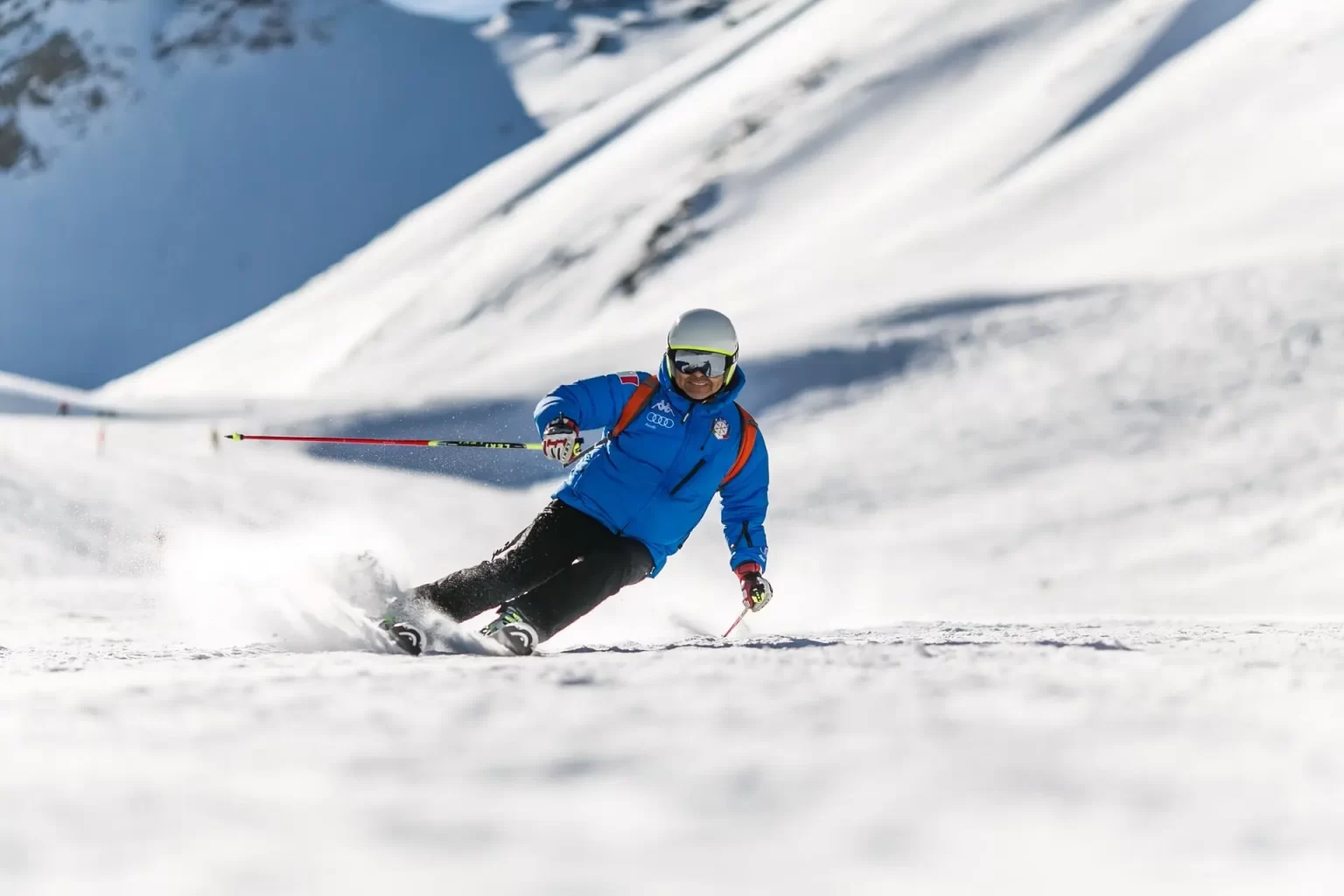Discover adapted winter sports
Cross-country skiing, wheelchair curling, alpine skiing, biathlon, ice hockey, and snowboarding are the 6 adapted winter sports, according to the CPB (Brazilian Paralympic Committee). Athletes with different Paralympic functional classifications can practice each sport, just as in summer sports.
Find out a little more about each of the adapted winter sports:
Wheelchair Curling
The wheelchair version of curling is very similar to the original form. The athletes’ goal is to throw the stones as close to the target as possible and prevent the opposing team from doing the same. To facilitate sliding, they “clean” the path, reducing friction. The competitor cannot place their feet on the ice during the launch and generally relies on the help of their teammates to hold the chair and keep it steady at this time. This modality is played in mixed teams.
Alpine skiing
Downhill, Super-G, Super Combined, Giant Slalom, and Slalom are the disciplines that are part of alpine skiing. The sport is competed in the sitting, standing, and visually impaired categories. The Slalom and Giant Slalom events are the most technical. With many curves and changes of direction; the Super-G and Downhill are for speed; and the Super Combinado combines the 2 characteristics.
Cross-country skiing
Athletes with physical (sitting or standing) and visual disabilities also compete in cross-country skiing. They divide the races into short distances (less than 5 km). Medium distances (from 5 km to 10 km), and long distances (from 10 km to 20 km), in addition to the team relay. The sport has been at the Paralympic Games since the first edition, in 1976, which was held in Sweden.
Adapted ice hockey
The main difference between the adapted ice hockey and the original is the use of a sled instead of skates and 2 sticks instead of 1 to help the players move. 5 line athletes plus the goalkeeper from each team enter the rink at a time. The objective is to score a goal against the opposing team, during the 3 halves of 15 minutes each.
For biathlon
In this modality, cross-country skiing and shooting competitions take place alternately. There are 3 categories of athletes who compete in the para biathlon: sitting, standing, and visually impaired. In each of them, the functional classification of the participants is also considered. Competitors do short, medium, and long-distance races, with a distance of 6 km to 15 km, and pass through 2 or 4 shooting ranges. In the race, the officials penalize the athlete who misses a shot with an extra 80 m lap or by adding 1 minute to the final time, depending on the type of race.
Paralympic snowboarding
Paralympic snowboarding competes in 3 categories: UL, for athletes with upper limb disabilities. LL1, for significant disability of a leg or above-knee amputation; and LL2 for disability with fewer limitations in the lower limbs. There are 2 disciplines:
- Snowboard cross, with 3 descents full of obstacles and jumps
- Banked slalom, with 3 descents in which the athlete needs to pass through the gates.
Learn more about Muay Thai




